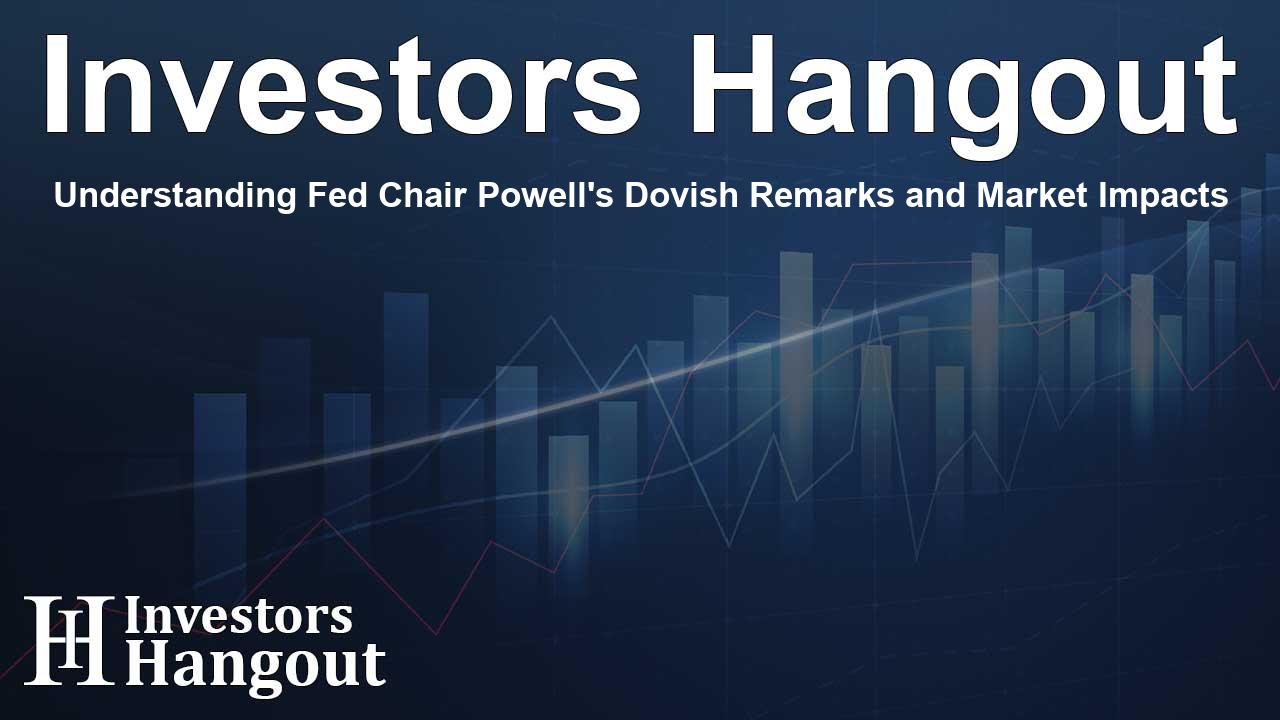Understanding Fed Chair Powell's Dovish Remarks and Market Impacts

Recent Developments from Fed Chair Powell
Recently, the financial world had its eyes on the speech delivered by US Federal Reserve Chairman Jerome Powell. The atmosphere surrounding his address was filled with anticipation, particularly regarding his stance on interest rates and economic trends. Buffeted by varied speculation regarding the Fed’s future approach, Powell's address at the Jackson Hole Symposium left many analysts pondering how the central bank would move forward amidst mixed economic signals.
During the address, Powell adopted a dovish tone, hinting at the possibility of a rate cut as soon as next month. However, he cautioned against over-optimism, reflecting concerns about employment trends and inflation risks. Powell's insights indicated that despite a softening job market, considerable inflation risks lingered, particularly due to factors such as tariffs. His remarks put the Fed in a ‘challenging situation’, emphasizing a need for cautious measures moving forward.
Job Market and Economic Balance
Diving deeper into his speech, Powell characterized the current labor market as exhibiting 'a curious kind of balance'. This balance reflects the significant slowdowns in both the supply and demand for workers, leading to rising fears about employment stability. He distinctly pointed out risks associated with layoffs and an increasing unemployment rate, marking this as a subtle shift from the Fed's earlier focus on inflationary trends alone.
Moreover, he mentioned that with the current policy sitting in a restrictive zone, there's a compelling argument made for adjusting their policy stance. Investors seized on these comments, interpreting them as a shift in the Fed's strategy to balance growth against inflationary pressures.
The landscape remains tumultuous, with Powell firmly stating that, despite a newfound dovish turn, the path ahead for economic stability is uncertain. Many market participants believe that the economic barometer will remain sensitive to upcoming reports on employment and consumer prices.
The Mixed Picture of the US Economy
Powell's remarks came on the heels of disappointing employment data, particularly the job losses reflected in the earlier months. Recently released Gross Domestic Product (GDP) figures displayed a moderate growth rate, suggesting that while the economy expanded, there were underlying stresses that could impact future policy decisions.
On the inflation front, July's consumer price index data showed a steady inflation rate. The market absorbed this news cautiously, noting that core inflation, which excludes volatile items like food and energy, slightly exceeded forecasts. This trend towards higher inflation could challenge the Fed's established target, stirring debate among bank officials about how to proceed.
In stark contrast, the Producer Price Index (PPI) revealed growing wholesale prices, hinting that end consumers might soon feel the effects of rising costs. Recognizing the implications of these economic indicators, Powell expressed cautious optimism regarding inflation, suggesting it may be transient. However, he acknowledged that rising inflation, coupled with a softening labor market, positions the Fed in a complex scenario.
Upcoming PCE Data and its Significance
The attention now shifts to the upcoming PCE inflation data, anticipated to provide insight into inflation trends. The PCE index is crucial for the Fed as it closely aligns with their inflation targets. Financial analysts have forecasted a stable inflation rate mirroring previous readings, but the results will significantly influence Fed policy expectations.
Market responses to Powell’s address indicate that investors are vigilantly observing the PCE data release scheduled for later this week. If inflation shows a significant rise, the narrative surrounding September’s rate cut could shift, potentially spurring investors to reassess their positions on interest rates.
The dual interplay between anticipated PCE results and employment reports will undoubtedly shape future strategies for the Fed. If indicators suggest rising inflation, we could witness a reinforcing of dollar strength alongside a reevaluation of rate cut probabilities. Such adjustments in sentiment are critical as they will affect broader market dynamics.
Frequently Asked Questions
What key messages did Fed Chair Powell convey in his speech?
Powell conveyed a dovish stance, indicating potential rate cuts but cautioned about ongoing inflation risks and employment stability.
How might PCE data influence future Fed monetary policy?
The PCE data is crucial for the Fed's inflation outlook. A rise could challenge current rate cut expectations, while a decline may reinforce dovish sentiments.
What factors are influencing the current labor market?
The labor market is affected by a slowdown in both the supply of and demand for workers, creating risks for employment stability.
In what ways could inflation rates affect the economy?
Rising inflation may constrain consumer spending and impact purchasing power, which in turn could lead to adjustments in monetary policy.
What should investors watch for next?
Investors should monitor upcoming job reports and PCE data to assess potential shifts in Fed policy and overall market conditions.
About The Author
Contact Owen Jenkins privately here. Or send an email with ATTN: Owen Jenkins as the subject to contact@investorshangout.com.
About Investors Hangout
Investors Hangout is a leading online stock forum for financial discussion and learning, offering a wide range of free tools and resources. It draws in traders of all levels, who exchange market knowledge, investigate trading tactics, and keep an eye on industry developments in real time. Featuring financial articles, stock message boards, quotes, charts, company profiles, and live news updates. Through cooperative learning and a wealth of informational resources, it helps users from novices creating their first portfolios to experts honing their techniques. Join Investors Hangout today: https://investorshangout.com/
The content of this article is based on factual, publicly available information and does not represent legal, financial, or investment advice. Investors Hangout does not offer financial advice, and the author is not a licensed financial advisor. Consult a qualified advisor before making any financial or investment decisions based on this article. This article should not be considered advice to purchase, sell, or hold any securities or other investments. If any of the material provided here is inaccurate, please contact us for corrections.
